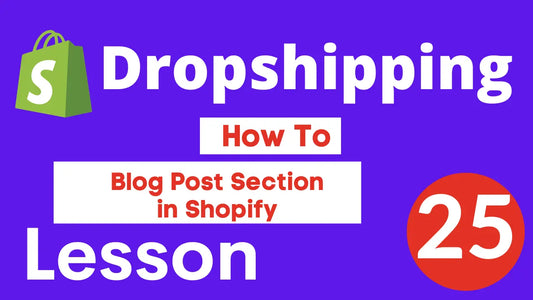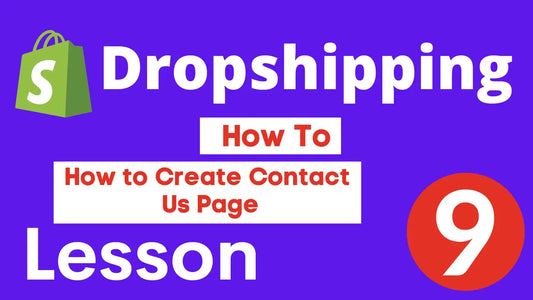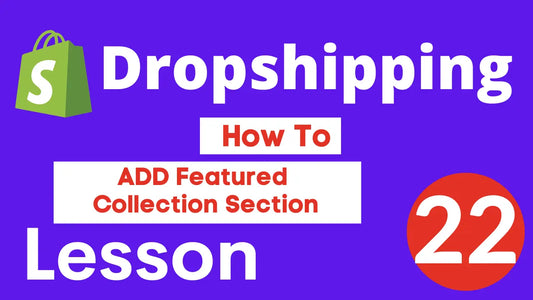Earning Money with OpenAI's Chat GPT
What is ChatGPT?
ChatGPT is an AI chatbot system that OpenAI released in November to show off and test what a very large, powerful AI system can accomplish. You can ask it countless questions and often will get an answer that's useful.
For example, you can ask it encyclopedia questions like, "Explaining Newton's laws of motion." You can tell it, "Write me a poem," and when it does, say, "Now make it more exciting." You ask it to write a computer program that'll show you all the different ways you can arrange the letters of a word.
Here's the catch: ChatGPT doesn't exactly know anything. It's an AI that's trained to recognize patterns in vast swaths of text harvested from the internet, then further trained with human assistance to deliver more useful, better dialog. The answers you get may sound plausible and even authoritative, but they might well be entirely wrong, as OpenAI warns.
Chatbots have been of interest for years to companies looking for ways to help customers get what they need and to and AI researchers trying to tackle the Turing Test. That's the famous "Imitation Game" that computer scientist Alan Turing proposed in 1950 as a way to gauge intelligence: Can a human conversing with a human and with a computer tell which is which.
But chatbots have a lot of baggage, as companies have tried with limited success to use them instead of humans to handle customer service work. A study of 1,700 Americans, sponsored by a company called Ujet, whose technology handles customer contacts, found that 72% of people found chatbots to be a waste of time.
What is ChatGPT used for?
ChatGPT is a prototype artificial intelligence chatbot developed by OpenAI which specializes in dialogue. The chatbot is a large language model fine-tuned with both supervised and reinforcement learning techniques. It is a fine-tuned version of a model in OpenAI's GPT-3.5 family of language models.
FAQ'S
How to make money with ChatGPT?
ChatGPT can be used to create powerful, engaging chatbots that can be used to automate customer service tasks, generate leads, and increase customer engagement. Additionally, ChatGPT can be used to create natural language processing applications for business purposes, such as summarizing customer feedback, automating customer support tasks, and providing automated customer feedback. By leveraging the power of ChatGPT, businesses can save time, money, and resources while improving customer experience.
How does ChatGPT Work?
ChatGPT uses a transformer-based language model to generate human-like text responses. It takes an input of text, such as a user’s question or statement, and returns a response based on its understanding of the context. ChatGPT uses a deep neural network to process the input data and generate a response. It is trained on a large corpus of text, allowing it to understand the context of conversations and generate accurate and natural-sounding responses.
What are the benefits of using ChatGPT?
ChatGPT provides businesses with a powerful natural language processing system that can be used to automate customer service tasks, generate leads, and improve customer engagement. Additionally, ChatGPT can be used to create natural language processing applications for business purposes, such as summarizing customer feedback, automating customer support tasks, and providing automated customer feedback. By leveraging the power of ChatGPT, businesses can save time, money, and resources while improving customer experience.
How can ChatGPT be used in business?
ChatGPT can be used in business to automate customer service tasks, generate leads, and improve customer engagement. Additionally, ChatGPT can be used to create natural language processing applications for business purposes, such as summarizing customer feedback, automating customer support tasks, and providing automated customer feedback. By leveraging the power of ChatGPT, businesses can save time, money, and resources while improving customer experience.
Is ChatGPT an open-source language model?
Yes, ChatGPT is an open-source language model. OpenAI, the creators of ChatGPT, have released the source code for ChatGPT on GitHub, allowing developers to build applications using the powerful natural language processing system.
What are the key features of ChatGPT?
The key features of ChatGPT include: • Natural language understanding – ChatGPT can process a variety of natural language inputs, such as questions, statements, and requests. • Contextual understanding – ChatGPT is trained on a large corpus of text, allowing it to understand the context of conversations and generate accurate and natural-sounding responses. • Automation – ChatGPT can be used to automate customer service tasks, generate leads, and improve customer engagement. • Open-source – ChatGPT is open-source, allowing developers to build applications using the powerful natural language processing system.
What is chat gpt3?
How ChatGPT is trained?
It is trained using machine-learning algorithms and can understand open-ended queries. Not only does it comprehend orders, but it also understands the language. As the bot learns from the interactions it has with users, it continues to improve.
Who own ChatGPT?
In 2019, OpenAI LP received a US$1 billion investment from Microsoft. OpenAI is headquartered at the Pioneer Building in Mission District, San Francisco
This artificial intelligence bot can answer questions and write essays, poems and computer programs. Careful how much you trust it, though.
What kinds of questions can you ask?
You can ask anything, though you might not get an answer. OpenAI suggests a few categories, like explaining physics, asking for birthday party ideas and getting programming help.
I asked it to write a poem, and it did, though I don't think any literature experts would be impressed. I then asked it to make it more exciting, and lo, ChatGPT pumped it up with words like battlefield, adrenaline, thunder and adventure.
One wacky example shows how ChatGPT is willing to just go for it in domains where people would fear to tread: a command to write "a folk song about writing a rust program and fighting with lifetime errors."
ChatGPT's expertise is broad, and its ability to follow a conversation is notable. When I asked it for words that rhymed with "purple," it offered a few suggestions, then when I followed up "How about with pink?" it didn't miss a beat. (Also, there are a lot more good rhymes for "pink.")
When I asked, "Is it easier to get a date by being sensitive or being tough?" GPT responded, in part, "Some people may find a sensitive person more attractive and appealing, while others may be drawn to a tough and assertive individual. In general, being genuine and authentic in your interactions with others is likely to be more effective in getting a date than trying to fit a certain mold or persona."
You don't have to look far to find accounts of the bot blowing people's minds. Twitter is awash with users displaying the AI's prowess at generating art prompts and writing code. Some have even proclaimed "Google is dead," along with the college essay. We'll talk more about that below.
CNET writer David Lumb has put together a list of some useful ways ChatGPT can help, but more keep cropping up. One doctor says he's used it to persuade a health insurance company to pay for a patient's procedure.
Who built ChatGPT?
ChatGPT is the brainchild of OpenAI, an artificial intelligence research company. Its mission is to develop a "safe and beneficial" artificial general intelligence system or to help others do so.
It's made splashes before, first with GPT-3, which can generate text that can sound like a human wrote it, and then DALL-E, which creates what's now called "generative art" based on text prompts you type in.
GPT-3, and the GPT 3.5 update on which ChatGPT is based, are examples of AI technology called large language models. They're trained to create text based on what they've seen, and they can be trained automatically -- typically with huge quantities of computer power over a period of weeks. For example, the training process can find a random paragraph of text, delete a few words, ask the AI to fill in the blanks, compare the result to the original and then reward the AI system for coming as close as possible. Repeating over and over can lead to a sophisticated ability to generate text.
Is ChatGPT free?
Yes, for now at least. OpenAI CEO Sam Altman warned on Sunday, "We will have to monetize it somehow at some point; the compute costs are eye-watering." OpenAI charges for DALL-E art once you exceed a basic free level of usage.
But OpenAI seems to have found some customers, likely for its GPT tools. It's told potential investors OpenAI expects $200 million in revenue in 2023 and $1 billion in 2024, according to Reuters.
What are the limits of ChatGPT?
As OpenAI emphasizes, ChatGPT can give you wrong answers. Sometimes, helpfully, it'll specifically warn you of its own shortcomings. For example, when I asked it who wrote the phrase "the squirming facts exceed the squamous mind," ChatGPT replied, "I'm sorry, but I am not able to browse the internet or access any external information beyond what I was trained on." (The phrase is from Wallace Stevens' 1942 poem Connoisseur of Chaos.)
ChatGPT was willing to take a stab at the meaning of that expression once I typed it in directly, though: "a situation in which the facts or information at hand are difficult to process or understand." It sandwiched that interpretation between cautions that it's hard to judge without more context and that it's just one possible interpretation.
ChatGPT's answers can look authoritative but be wrong.
"If you ask it a very well structured question, with the intent that it gives you the right answer, you'll probably get the right answer," said Mike Krause, data science director at a different AI company, Beyond Limits. "It'll be well articulated and sound like it came from some professor at Harvard. But if you throw it a curveball, you'll get nonsense."
The software developer site StackOverflow banned ChatGPT answers to programming questions. Administrators cautioned, "because the average rate of getting correct answers from ChatGPT is too low, the posting of answers created by ChatGPT is substantially harmful to the site and to users who are asking or looking for correct answers."
You can see for yourself how artful a BS artist ChatGPT can be by asking the same question multiple times. I asked twice whether Moore's Law, which tracks the computer chip industry's progress increasing the number of data-processing transistors, is running out of steam, and I got two different answers. One pointed optimistically to continued progress, while the other pointed more grimly to the slowdown and the belief "that Moore's Law may be reaching its limits."
Both ideas are common in the computer industry itself, so this ambiguous stance perhaps reflects what human experts believe.
With other questions that don't have clear answers, ChatGPT often won't be pinned down.
The fact that it offers an answer at all, though, is a notable development in computing. Computers are famously literal, refusing to work unless you follow exact syntax and interface requirements. Large language models are revealing a more human-friendly style of interaction, not to mention an ability to generate answers that are somewhere between copying and creativity.
Will ChatGPT help students cheat better?
Yes, but as with many other technology developments, it's not a simple black and white situation. Decades ago, students could copy encyclopedia entries, and more recently, they've been able to search the internet and delve into Wikipedia entries. ChatGPT offers new abilities for everything from helping with research to doing your homework for you outright. Many ChatGPT answers already sound like student essays, though often with a tone that's stuffier and more pedantic than a writer might prefer.
High school teacher Daniel Herman concluded ChatGPT already writes better than most students today. He's torn between admiring ChatGPT's potential usefulness and fearing its harm to human learning: "Is this moment more like the invention of the calculator, saving me from the tedium of long division, or more like the invention of the player piano, robbing us of what can be communicated only through human emotion?"
Dustin York, an associate professor of communication at Maryville University, hopes educators will learn to use ChatGPT as a tool and realize it can help students think critically.
"Educators thought that Google, Wikipedia, and the internet itself would ruin education, but they did not," York said. "What worries me most are educators who may actively try to discourage the acknowledgment of AI like ChatGPT. It's a tool, not a villain."
Can ChatGPT write software?
Yes, but with caveats. ChatGPT can retrace steps humans have taken, and it can generate actual programming code. You just have to make sure it's not bungling programming concepts or using software that doesn't work. The StackOverflow ban on ChatGPT-generated software is there for a reason.
But there's enough software on the web that ChatGPT really can work. One developer, Cobalt Robotics Chief Technology Officer Erik Schluntz, tweeted that ChatGPT provides useful enough advice that over three days, he hasn't opened StackOverflow once to look for advice.
Another, Gabe Ragland of AI art site Lexica, used ChatGPT to write website code built with the React tool.
ChatGPT can parse regular expressions (regex), a powerful but complex system for spotting particular patterns, for example dates in a bunch of text or the name of a server in a website address. "It's like having a programming tutor on hand 24/7," tweeted programmer James Blackwell about ChatGPT's ability to explain regex.
Here's one impressive example of its technical chops: ChatGPT can emulate a Linux computer, delivering correct responses to command-line input.
What's off limits?
ChatGPT is designed to weed out "inappropriate" requests, a behavior in line with OpenAI's mission "to ensure that artificial general intelligence benefits all of humanity."
If you ask ChatGPT itself what's off limits, it'll tell you: any questions "that are discriminatory, offensive, or inappropriate. This includes questions that are racist, sexist, homophobic, transphobic, or otherwise discriminatory or hateful." Asking it to engage in illegal activities is also a no-no.
Is this better than Google search?
Asking a computer a question and getting an answer is useful, and often ChatGPT delivers the goods.
Google often supplies you with its suggested answers to questions and with links to websites that it thinks will be relevant. Often ChatGPT's answers far surpass what Google will suggest, so it's easy to imagine GPT-3 is a rival.
But you should think twice before trusting ChatGPT. As with Google itself and other sources of information like Wikipedia, it's best practice to verify information from original sources before relying on it.
Vetting the veracity of ChatGPT answers takes some work because it just gives you some raw text with no links or citations. But it can be useful and in some cases thought provoking. You may not see something directly like ChatGPT in Google search results, but Google has built large language models of its own and uses AI extensively already in search.
So ChatGPT is doubtless showing the way toward our tech future.
Chat Generative Pre-training (Chat GPT), developed by OpenAI, is an advanced AI model designed to simulate human-like conversation. Leveraging this technological innovation can open up new avenues of income, particularly in fields where interactive, engaging content matters.
Building bots for customer service, creating conversational interfaces, or developing dynamic chatbots for marketing campaigns are just a few possibilities where you could employ Chat GPT to generate income. Licensing the technology to businesses for personalized user experiences is another potential approach.
To monetize Chat GPT, you first need to understand its capacities and limitations. It is capable of generating impressively human-like text, grasping the nuances of a conversation, and can even handle multiple interwoven conversational threads. However, it may occasionally produce text that is random or sensitive.
With these capabilities and considerations in mind, entrepreneurs and businesses can explore new applications for Chat GPT. By devising ingenious ways to use this technology, they can generate income while contributing to the development of conversational AI.





